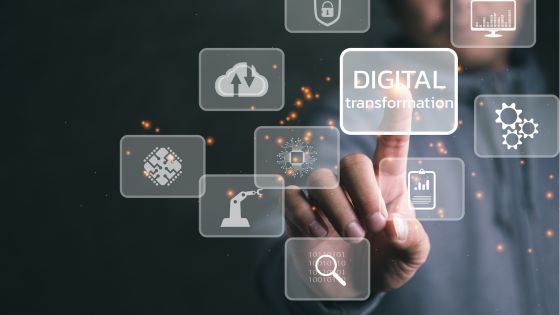In the past decade, we have seen an unprecedented shift in the way that businesses interact with their customers. The rise of digital technologies has transformed the retail industry, making it easier than ever before for businesses to connect with customers on a more personal level. Digital transformation is driving retail customer experience, revolutionizing the way that businesses approach customer engagement, and reshaping the way we shop.
What is Digital Transformation in Retail?
Digital transformation refers to the integration of digital technology into all areas of a business, fundamentally changing how businesses operate and deliver value to customers. For retail businesses, digital transformation involves incorporating digital technologies to create a more seamless and personalized shopping experience for customers.
Digital transformation in retail is all about using technology to improve the customer experience. It involves using data analytics, artificial intelligence, and other cutting-edge technologies to better understand customer behavior, preferences, and needs. Retailers can then use this data to offer personalized recommendations, improve customer service, and tailor marketing campaigns to specific customers.
How is Digital Transformation Driving the Retail Customer Experience?
Digital transformation is changing the retail experience in a wide variety of ways. As a consumer, you’ve likely noticed some of the ways that your own shopping experience has changed over the years, though you may not have thought about the reasons why or how.
In this section, we’ll examine some of the biggest retail trends born out of digital transformation.
1. Personalization
One of the key ways that digital transformation is driving retail customer experience is through personalization. Digital technologies enable retailers to gather vast amounts of data on their customers, including their preferences, purchase history, and browsing behavior. This data can then be used to create a more personalized shopping experience for each customer.
For example, retailers can use data analytics to create personalized product recommendations for each customer, based on their previous purchases and browsing history. This can help to increase sales and improve customer loyalty.
2. Seamless Shopping Experience
Digital transformation is also driving a more seamless shopping experience for customers. Retailers can use digital technologies such as mobile apps, self-checkout kiosks, and contactless payment systems to make shopping more convenient and efficient for customers.
Mobile apps can be used to allow customers to browse products, make purchases, and track their orders, all from their mobile device. Self-checkout kiosks can help to reduce checkout lines and improve the shopping experience for customers.
Contactless payment systems, such as Apple Pay and Google Wallet, make it easy for customers to pay for their purchases without the need for cash or credit cards. This can help to reduce transaction times and improve customer satisfaction.
3. Omnichannel Retailing
Digital transformation has also enabled retailers to adopt an omnichannel approach to retailing. Omnichannel retailing involves offering customers a seamless shopping experience across multiple channels, including online, mobile, and in-store.
For example, customers can browse products online and then pick them up in-store, or they can order products online and have them delivered to their home. This can help to improve the customer experience by providing them with more options and flexibility when it comes to shopping.
4. Improved Customer Service
Digital technologies have also enabled retailers to improve customer service. Retailers can use chatbots, virtual assistants, and other AI-powered tools to provide customers with instant support and assistance.
For example, retailers can use chatbots to answer customer questions and provide them with product recommendations. Virtual assistants can be used to guide customers through the shopping process, helping them to find the products they are looking for and providing them with personalized recommendations.
5. Data Analytics
Additionally, digital transformation has enabled retailers to use data analytics to better understand their customers and their behavior. Data analytics can help retailers to identify patterns and trends in customer behavior, which can then be used to improve marketing campaigns and product offerings.
For example, retailers can use data analytics to identify which products are most popular with certain customer segments, allowing them to tailor marketing campaigns to these customers. They can also use data analytics to identify which products are frequently bought together, which can help to improve product bundling and cross-selling opportunities.
Empowering Retailers to Make Data-Backed Decisions
Digital transformation has enabled retailers to create a better, more efficient, and more personalized shopping experience for their customers. By collecting and leveraging customer data, retailers have been able to glean valuable insights about their target audience and make informed decisions about customer experience.
If you want your business to be part of the digital transformation revolution, Sogolytics can help. SogoCX allows you to collect invaluable customer data, provides automatic analytics, and enables you to manage and elevate the retail customer experience. Get started with our retail customer experience management platform today!




















